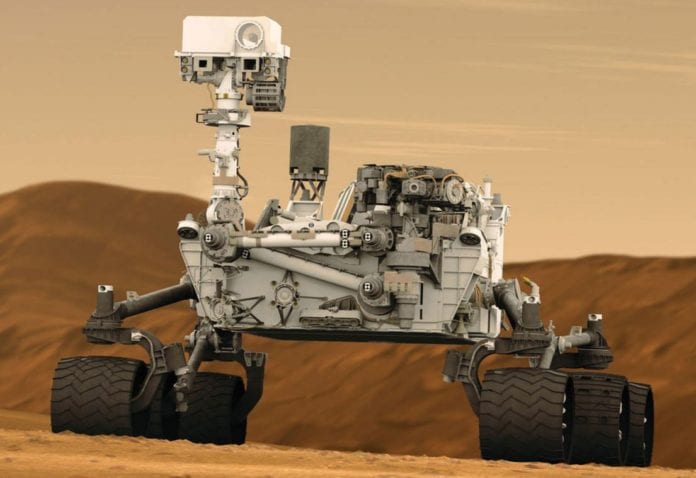NASA’s Jet Propulsion Laboratory is a center for the robotic exploration of space, having sent a robot towards every planet in the solar system. Cloud computing is an essential part of the tactical operations for the Mars Science Laboratory mission. From the control room in Pasadena, California, NASA/JPL is using Amazon Web Services to capture and store images and metadata collected from the Mars Exploration Rover and the Mars Science Laboratory missions. The Mars Exploration Rover Opportunity is still roving on Mars after landing eight years ago, and Mars rover Curiosity landed on Aug. 5, 2012.

On Nov. 26, 2011, NASA launched Curiosity on an eight-month voyage to the red planet. This mission had a number of challenges that needed to be overcome in order to be successful. First, the landing was a challenge because Curiosity’s mass rendered previous landing approaches unachievable. Engineers at JPL designed a technique that concluded with a “sky crane” maneuver, which gently lowered Curiosity to the surface. NASA wanted to ensure this event was shared with fans across the globe by providing up-to-the-minute details of the mission – especially during the final seven minutes it took for the rover to descend through the atmosphere and land on Mars. The availability, scalability and performance of the government website was important during the landing event. Prior to working with AWS, supporting hundreds of thousands of concurrent visitors to the website would have been very difficult, requiring significant web and live video streaming infrastructure that NASA/JPL did not have, according to a case study provided by IoT One.
NASA’s Jet Propulsion Laboratory used AWS to stream the images and video associated with Curiosity’s landing. Cloud computing enabled JPL to provision capacity rapidly and leverage the AWS cloud to deliver the landing to the public. With public users all over the globe visiting its sites, NASA/JPL served its contents from AWS regions around the world to enhance the viewing experience and scale to meet global demands.
In just a few weeks, NASA/JPL was able to design, build, test and deploy their web hosting and live video streaming solutions that were built using a variety of services on AWS. NASA/JPL’s live video streaming architecture was developed on a combination of Adobe Flash Media Server, Amazon Elastic Compute Cloud instances running the nginx caching tier, elastic load balancing, Amazon Route 53 for DNS management and Amazon CloudFront for content delivery.
Amazon EC2 instances running the Amazon Linux AMI used configured scripts and Amazon EC2 instance metadata. Shortly before the landing, NASA/JPL provisioned stacks of AWS infrastructure, each capable of handling 25 gigabits per second of traffic. NASA/JPL used Amazon CloudWatch to monitor spikes in traffic volume and provision additional capacity based on regional demand. As traffic volumes returned to normal hours after the landing, NASA/JPL used AWS CloudFormation to deprovision resources using a single command.
Shared storage for Railo is provided by Amazon EC2 instances running Gluster on a pool of Amazon Elastic Block Store volumes for disk I/O. The CMS also interacts with a highly available, multi-AZ MySQL database managed by Amazon Relational Database Service. Traffic was dispersed across CMS servers by a number of elastic load balancers using Amazon Route 53 to provide a weighted traffic distribution across the ELBs. Amazon CloudFront was also used to spread traffic to points of presence around the world in a move to reduce latency for international visitors and improve the overall scalability of the solution.

Operating the mars.jpl.nasa.gov website on Amazon Web Services allowed NASA/JPL to broadcast their message to the world without building the infrastructure themselves. The capabilities afforded by AWS allowed NASA/JPL to construct a scalable web infrastructure in only two to three weeks instead of months.
With Curiosity safely on Mars, the mission continues to use AWS to automate the analysis of images from Mars, maximizing the time scientists have to identify potential hazards or areas of particular scientific interest. As a result, scientists are able to send a longer sequence of commands to Curiosity that increases the amount of exploration the Mars Science Laboratory can perform on any given sol (Martian day).

